Preparing for Lead and Copper Revisions
Utilities Taking a Proactive Approach to Corrosion Control
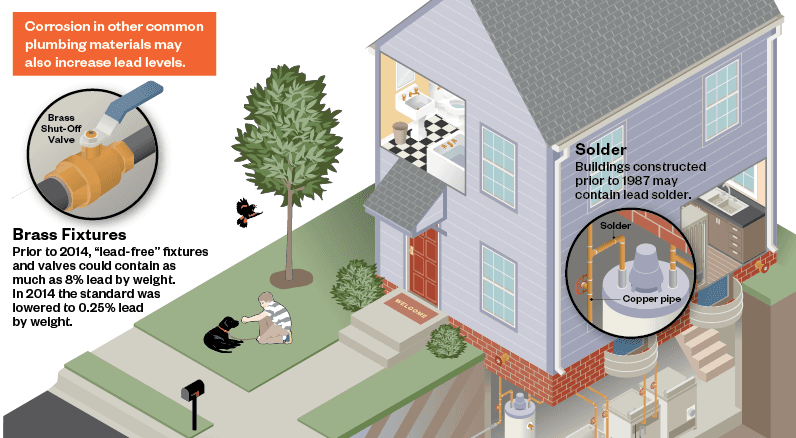
Historically, the drinking water industry has primarily taken a reactive approach to corrosion control. Since its promulgation in 1991, the Lead and Copper Rule has required an evaluation and implementation of optimal corrosion control only after a lead or copper action level exceedance. Given recent events in the news, utilities throughout the United States are preemptively evaluating and optimizing corrosion control in their systems; some States are proposing to enforce lead and copper action levels that are more stringent than existing federal regulatory requirements; and proposed Lead and Copper Rule Long-Term Revisions will drastically impact how utilities monitor and optimize corrosion control.
Related Topics:

This presentation explains the background of corrosion control theory and guidelines to help utilities monitor and maintain optimum corrosion control. Several case studies are used to illustrate the various steps that are being taken by utilities throughout the United States to proactively optimize corrosion control. These steps will range from a desktop water quality evaluation to corrosion control pilot plants and full-scale lead service line removal programs.
The expertise and experience of some of the country’s leading corrosion control experts has been combined to develop a summary of steps to assist utilities in taking a holistic, proactive approach to corrosion control and to prepare for future, more stringent regulations. These methods include a desktop water quality and distribution system material evaluation, theoretical lead solubility analysis, water quality and sequential sampling of distribution sites, as well as various bench-scale and pilot study methods.

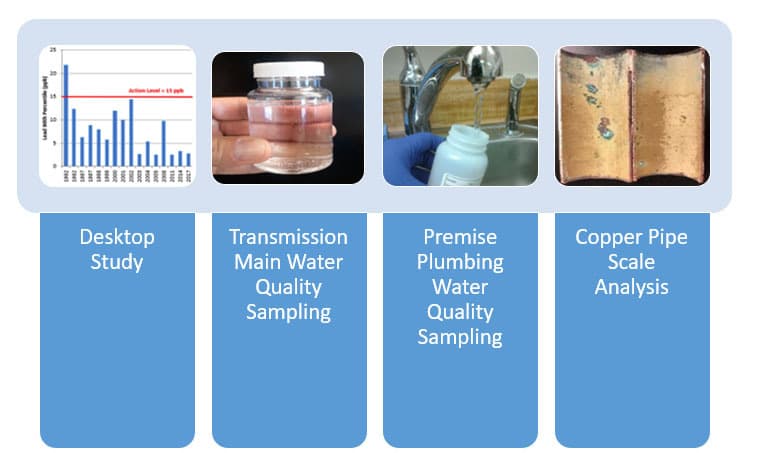
Cobb County-Marietta Water Authority
The Cobb County-Marietta Water Authority (CCMWA) is a regional wholesale authority that provides wholesale drinking water to 11 retail water suppliers and two industrial/institutional customers. They currently use pH adjustment with lime for corrosion control. Driven by updated industry guidance, reports of copper pitting corrosion, and planning for upcoming LCR Long-Term Revisions, CCMWA undertook a corrosion control evaluation using a methodology that included a desktop study, transmission main water quality sampling, premise plumbing water quality sampling, and copper pipe scale analysis.
The copper pipe scale analysis revealed visible pitting with an elemental and scale structure that is characteristic of soft water pitting. Based on the results of this study, two options were recommended for optimizing CCMWA’s corrosion control treatment; increasing alkalinity/DIC or adding orthophosphate. CCMWA is also taking additional proactive steps to test the impacts of orthophosphate on lead, copper, and cementitious materials, as well as copper pitting, in a thorough bench and pilot scale testing program.
Our Work in Buffalo, NY
The City undertook a sequential sampling of lead services lines that revealed two layers of deposits – amorphous deposits (Al, Fe) and lead carbonate scale. Recommendations for Buffalo included maintaining consistent orthophosphate levels and water quality, pilot scale demonstration testing to evaluate alternate corrosion inhibitors, and modifying corrosion inhibitor type and dose per USEPA guidelines.

City of Buffalo, NY
The City of Buffalo’s primary drinking water source is Lake Erie, which has stable raw water quality. The City has used blended phosphate as a corrosion inhibitor since 1997. Due to public concern over lead in the drinking water supply and an abundance of lead service lines, the City has taken a proactive approach to corrosion control and has adopted more stringent action levels by setting an internal lead action limit of 5 ppb (USEPA lead action level is currently 15 ppb).
The City undertook a sequential sampling of lead services lines. The lead service line scale analysis revealed two layers of deposits – amorphous deposits (Al, Fe) and lead carbonate scale. Recommendations for Buffalo included maintaining consistent orthophosphate levels and water quality, pilot scale demonstration testing to evaluate alternate corrosion inhibitors, and modifying corrosion inhibitor type and dose per USEPA guidelines.
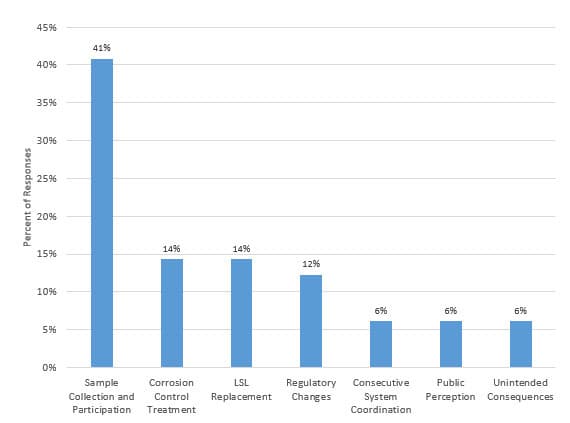

California Utility LCR Sample Site Assessment
For one utility in California, LCR Sample Site Assessment Pilot Program Methods included records research, LCR data analysis, geospatial analysis, and a detailed customer survey. In a 2019 utility survey by Hazen and Sawyer, coordinating compliance sampling and customer participation was reported to be the most challenging aspect of LCR compliance.
To combat these challenges, digital infographics were developed to help customers identify plumbing materials and customer participation initiatives were introduced. Phone and online outreach was conducted, and online survey outreach was found to be the most effective.
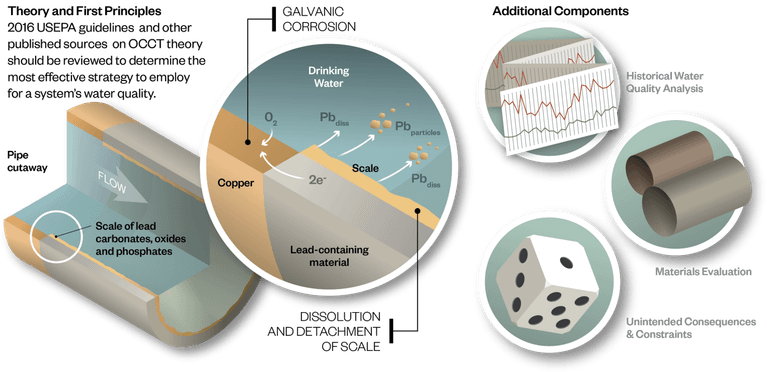
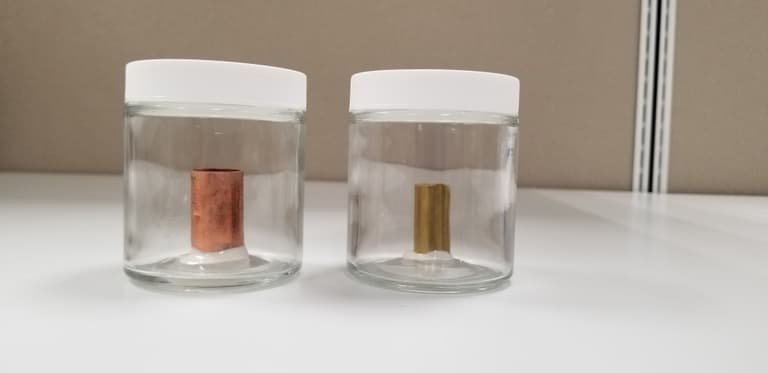
Colorado Department of Public Health and Environment (CDPHE)
The Colorado Department of Public Health and Environment (CDPHE) developed corrosivity classifications for source water and treatment changes and had concerns about vast differences among corrosion testing procedures performed by utilities. As a result, they developed desktop study guidance for their utilities that includes modeling, sampling, and reviewing similar systems.
For the immersion testing protocol, CDPHE sought to develop low-cost testing approach for small and medium systems without lead service lines. Materials used included lead-tin solder, leaded brass, and copper pipe. CDPHE also developed experimental protocol, a checklist, and a worksheet template. Their Lead and Copper Corrosion Bench-Scale Testing Guidance Manual can be found on the CDPHE website.










